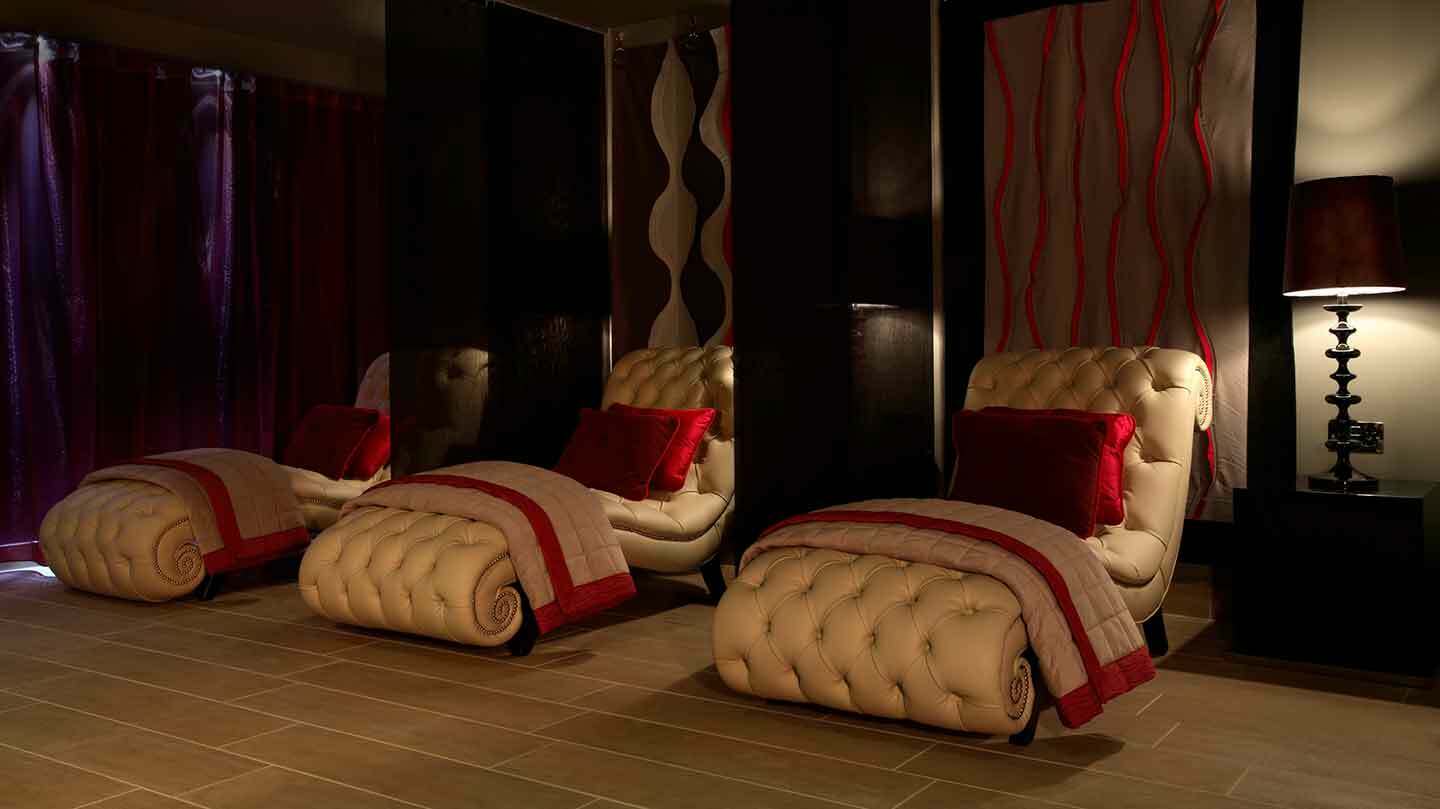Most day spas or stay spas have a relaxation room, but what is the etiquette when it comes to a relaxation room? Is a relaxation room really just there for you to relax in? Can you talk in it or fall asleep?
Relaxation rooms tend to be divided into two types: ones where you can talk and ones where you should be quiet. The rooms will usually have chairs, loungers, bean-bags or, in some cases, hanging pods or hammocks, so you can lie down, put your feet up and chill out. A relaxation room is the place to either get into a calm frame of mind before a treatment or enjoy the soporific effects of a wonderful treatment.
The more sociable relaxation rooms tend to be well-lit with a good supply of glossy magazines for you to flip through. Although it's usually fine to talk in these relaxation rooms, be sensitive to the needs of others around you, who may be trying to completely relax; keep your conversations low. Make sure you keep your mobile phone turned to silent. In fact, if there was ever a time to leave your mobile safely stowed away, it's now.
The more quiet relaxation rooms often bring many elements into play to soothe your senses. Soft, pleasing-to-the-touch fabrics such as velvet, faux-fur, towelling and fleece are often used on couches to provide a soothing and warm place to nestle down and relax.

Most relaxation rooms are subtly-lit and decorated in soft tones. Think of it as an extension of the treatment rooms - with the soothing scent of essential oils upping the wellness factor after a deep tissue massage or holistic head massage. Candlelight gives a soft, warm glow; the dancing flame and moving shadows create a distraction for the mind and can induce a pleasant trance-like state. Many ancient civilisations, including the Egyptians and Chinese, used chromotherapy, or colour therapy. Yellow is thought to stimulate nerves and purify the system; orange is meant to increase energy levels, while blue is believed to soothe illnesses and treat pain.
Many spas opt for either sounds of nature or relaxing rhythmic beats on their sound system. Natural sounds such as waves, crickets or birdsong are both repetitive and also constantly evolving. Listening can cause the listener to slow down their breathing and heart rate, and free the mind from stress and worries. Research has shown that listening to music can have a positive effect on pain management by causing the body to release endorphins; music can even reduce depression by up to 25 pre cent, according to a paper in the Journal of Advanced Nursing.
There should be a supply of fresh water in the room, and many spas also provide fresh fruit to nibble on. But the big question: is it OK to have a snooze in a relaxation room? We checked with Pam Clegg, Champneys International College Principal, who said:
"Clients respect quietness, so conversations are discouraged for the respect of others. Dropping off to sleep should be no problem. We get lots of people falling asleep, which in our eyes means that we have achieved the ultimate in relaxation, but if you're concerned, check with the spa reception or your therapist beforehand."
So there you have it -- just try not to snore too loudly.
* If you fancy visiting the relaxation room pictured, you can find it at The Grand Jersey.
Reference: Siedliecki, S.L., Good, M. Effect of music on power, pain, depression and disability. Journal of Advanced Nursing, 2006; Jun;54(5):553-62. See: http://www.ncbi.nlm.nih.gov/pubmed/16722953 [Accessed May 2010]

Summer Spy
3rd December 2015
Spy Likes:
Warmth and sunshine; spas which take me away to another country; fruit infused waters; beach-worth pedicures; deep tissue massages.
Spy Dislikes:
High footfalls; treatments that over promise and under deliver; heavy lunches; loungers drapped in used towels.
